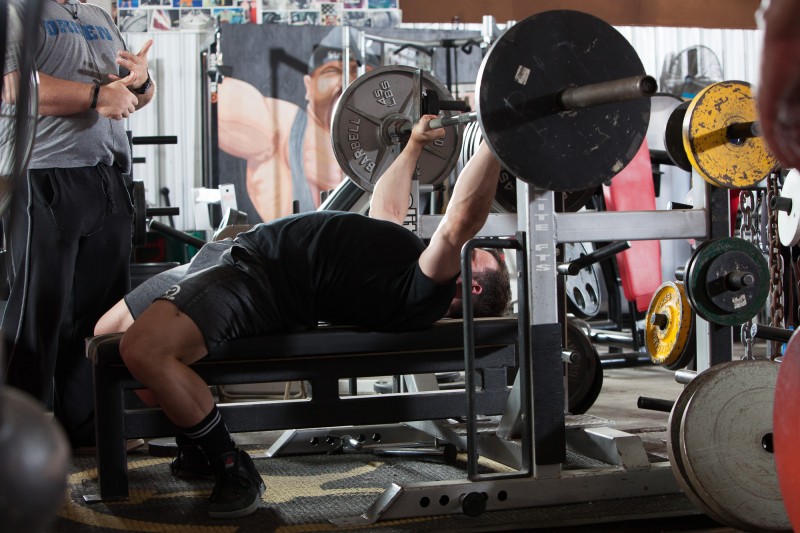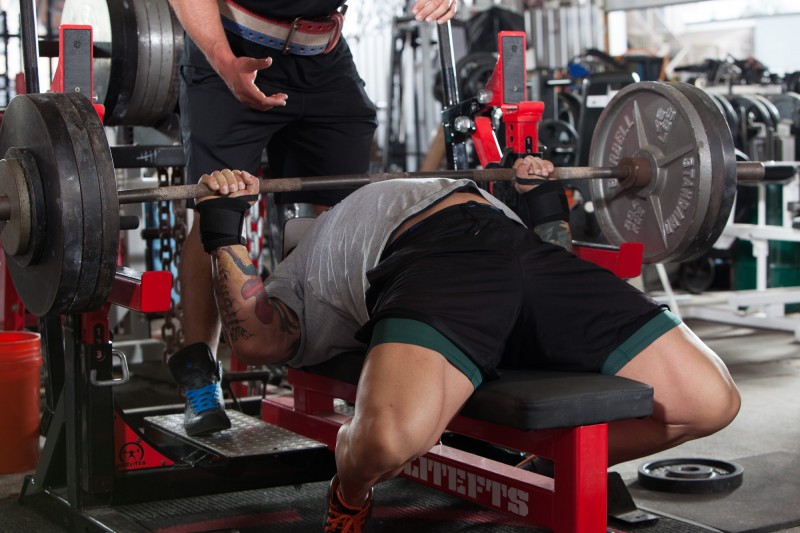
At my job, we sit down as a staff once a week to discuss any issues within our department. We also discuss an article, and it gives me a chance to rant about whatever is on the top of my head. Anyone who knows me well knows that I love a good rant. The key to a good rant is to have some truth but also have some humor. At times, I've been known to accentuate certain parts of a story to make the point stronger. Some would claim that this is stretching the truth, but we all know that it's just drawing out the truth.
Any time I end one of these polemics, I normally come up with one or two good points or ideas about the rant. In fairness, I tend to start with at least one point, and then it grows until I remember another point that I was trying to make weeks earlier.
RECENT: Goodbye 2018, Hello 2019
This week wasn't any different, and it brought to mind the two factors in strength and conditioning that control all we do: load and speed (or acceleration). I'll break down how and why these matter as well as the difference in trained versus untrained athletes when it comes to load and speed.
Newton’s Second Law of Motion
We all know that Newton's second law of motion is F=ma (F is force; m is mass; and a is acceleration). I often look at this as dynamic effort is F=mA, maximal effort is F=Ma, and repetition effort is F=ma. In a nutshell, this means that dynamic effort is big acceleration multiplied by small mass; max effort is big mass multiplied by little acceleration; and repetition effort is moderate mass multiplied by moderate acceleration. It's important to note that acceleration is a part of every lift. Even back in the HITT heyday, when people tried to not “use” acceleration, it was still impossible not to accelerate and move a bar or any external load. So we know that we can manipulate load or acceleration to change the training stimulus.

In The Under- or Untrained Athlete
We have to accept whom we're working with in our daily jobs. Most of your athletes aren't highly trained. I know many hate to admit this, but it's the truth. If you're a collegiate strength coach, you're getting mostly 18-year-old students who have rarely truly trained. Most of what I've seen are athletes who have either been coached by a high school sports coach who meant well but had expertise far outside of strength training, or athletes who have been trained by a “speed coach” who is actually just a great salesperson. There are times when an athlete shows up prepared, but these are the exception, not the rule.
Knowing that most of our athletes will be undertrained, we need to meet them where they are. I’d say that few of my younger athletes have been prepared to get under a heavy load. I've seen athletes do fine in the functional movement screen, and then as soon as they try to squat weight, all hell breaks loose. They just don't have the strength to handle a heavy load. So the load/weight is now controlling the athlete. This is when you must step the athlete back and just do repetition work and hammer home form while getting strength through osmosis. Remember, if someone is weak, then anything will get them stronger, so why take a chance with an ugly lift?
Let’s add speed to an undertrained athlete and see what happens. Most athletes I've encountered love doing “speed work.” The problem (due to lack of strength) is that once they add speed to any movement, the movement falls apart. Watch your young athlete walk, jog, and run. I ask my athletes at what moment do they lose rhythm? At the end of the day, great athletes should have rhythm to what they do. Once you see a loss in that rhythm, find where the breakdown occurred, and begin to fix this issue.
In The Trained Athlete
If we were to go back to our exercise science books, we would remember that there is a huge difference between how a trained and an untrained athlete respond to the same stimulus. This is why I've said, and will repeat, that there isn't any such thing as overtraining. There is only being underprepared for the training that you're asking of the athlete.
Think of it this way: I used to run long distances. I would log over 30 miles a week. I haven't run more than a 5K in a few years. If I started training at the volume I did in college, I would be injured within a week. On the flip side, if I brought my cross country team in to train with me, they would be hurt within a day. The stimulus is the same, but the specific preparedness of the athlete is where the difference lies.

Knowing that each athlete's preparedness will be unique to that specific athlete, we must now decide when it's appropriate to adjust speed and load. As I wrote this, I was thinking of my good friend Casey Williams. Now, I'm going to put words in his mouth (because we're good enough friends, I can do that), but I can imagine that an experienced strong lifter such as Casey would say load and speed shouldn't change anything. And he is correct. In an experienced lifter, load and speed shouldn't change anything.
As an athlete perfects his or her technique, nothing should affect how that lift is done. If the athlete is strong enough and has perfected the form enough, he or she should look the same on either a speed squat or a max effort squat. However, the reality is we all know that at times, things will go south, and we will need to recover a lift. This is when we see weaknesses, and this is a great time for assessments.
Let's take a look at what happens when we add speed to the trained athlete. (The ironic part is that as a strength coach, this is one of my happiest paragraphs to pen.) As we add speed to the highly trained athlete, we tend to see fewer breakdowns in technique (this is assuming that there aren't any mobility or structural issues).
Let us go back to my friend Casey. He has been adding box jumps back into his program. Visit his training logs and watch how rhythmic they look. Strength controls all that we do, and if we increase our strength and all else remains static, we will have better body control and awareness.
The moral of the story here is pretty simple — add speed, add more load, and teach the movements. Or as my man Jim Kiritsy would say, “Do the simple things savagely well.”
I’d also add that when technique breaks down, don’t freak out. Use these moments as teaching moments for the athlete. Show them the issue and have them aid you in fixing the issue. At the end of the day, they must know that you know what you're doing y, but as Teddy Roosevelt said, “No one cares how much you know until they know how much you care.”










